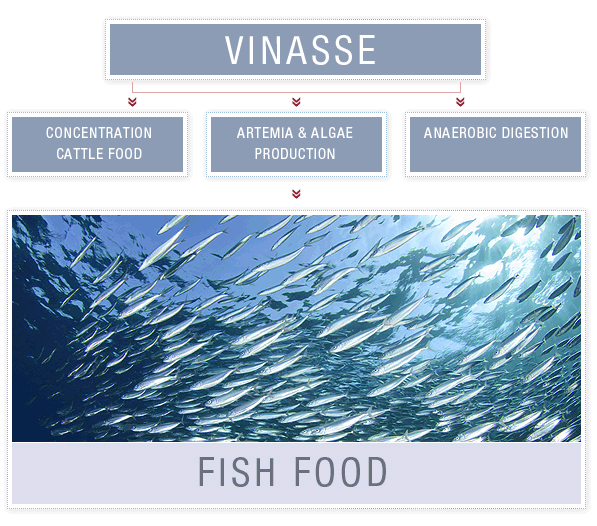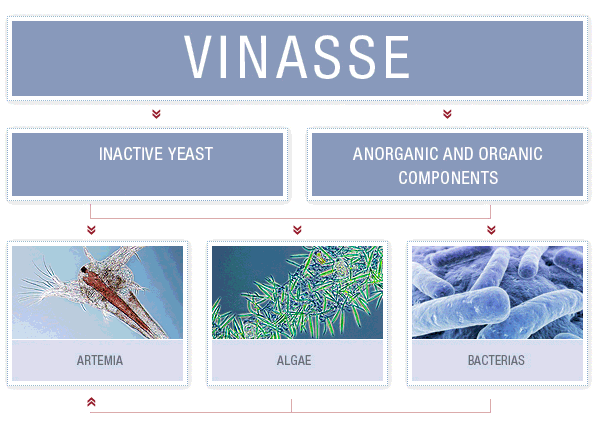PROCESS
Vinasse for cultivating Artemia and zooplankton, as well as for producing microalgae
Bioethanol is produced from various agricultural raw materials containing sugars or starches. Just like conventional alcohol, bioethanol is extracted through alcoholic fermentation of sugars with the help of yeast and then concentrated. The production of 1 litre of ethanol creates 12-15 litres of vinasse, which itself contains organic substances and nutrients. Conventional production processes use raw vinasse as a fertiliser. However, the vinasse/slurry can also be thickened in an energy-intensive procedure and then marketed as an animal feed additive, referred to as Distiller's Dried Grains with Solubles (DDGS). The global market price for DDGS is estimated to be around €200 per tonne. Its use in biogas plants is currently also being intensively investigated.

Chart: Vinasse 1
In the vin2food process, the vinasse is separated into two fractions. One of the fractions is used to cultivate Artemia and zooplankton, a high-quality feed for aquacultures, while the second is used for the production of microalgae. These algae contain a very high proportion of minerals and trace elements, and can therefore be used to feed the Artemia or processed further to create foodstuffs or animal feed.

Chart: Vinasse 2

